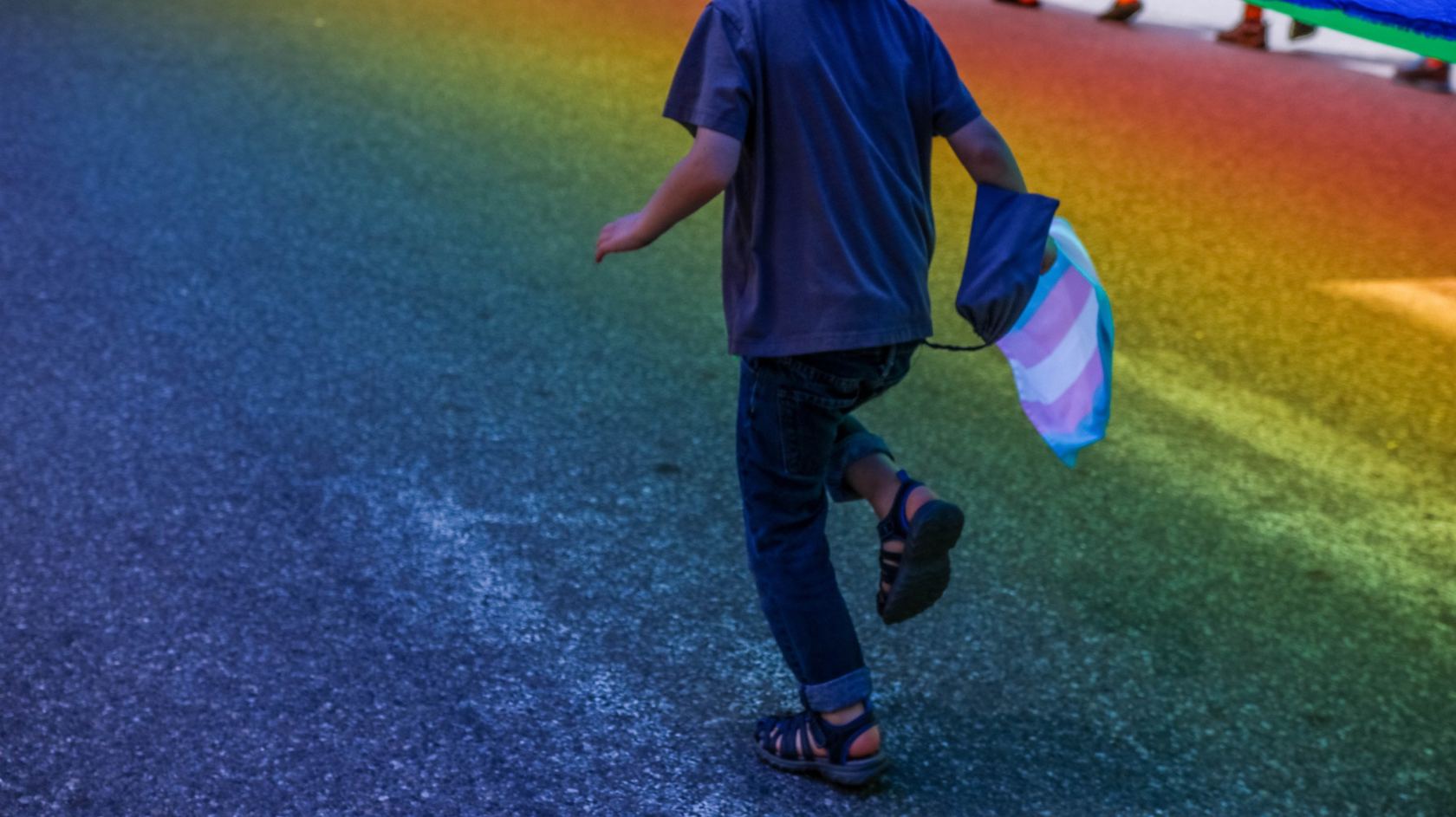Adolescence is a critical time of growth, self-discovery, and, unfortunately, significant challenges. Some teens struggle with behavioral issues, emotional regulation, mental health disorders, and unhealthy coping mechanisms that interfere with their daily lives. When...
Recent Posts
After Residential Treatment: Helping Teens Transition Back Home
Residential treatment can be life-changing for a teen struggling with mental health, trauma, or behavioral challenges. But what happens after your child returns home? The transition back to daily life is a critical period — one that requires patience, structure, and...
How Residential Treatment Supports Teens with Co-Occurring Disorders
Navigating adolescence is challenging enough, but for teens grappling with co-occurring disorders, the journey can feel insurmountable. Co-occurring disorders, also known as dual diagnoses, refer to the presence of two health disorders occurring at the same time....
A Parent’s Guide To Navigating Grief In Teenagers
Grief is a complex emotion that can be challenging for teens to navigate. According to the Childhood Bereavement Estimation Model (CBEM), 1 in 12 children and teens in the U.S. will experience the death of a parent or sibling by age 18. While grief is usually...
How Long Is Residential Treatment for Teens?
If your child is about to begin a stay at a residential treatment center, you’re bound to have a lot of questions. What types of therapy will be involved? Will our family be allowed to visit? And, of course, how long is a teen residential treatment program? In this...
Is Residential Treatment Considered Inpatient or Outpatient?
If you’ve never engaged with residential treatment centers before, it’s common to ask: is residential treatment considered inpatient or outpatient? Well, the answer is simple: our residential teen treatment centers are considered inpatient because teens stay at our...
Benefits of Residential Treatment for Teens: When to Choose It Over Other Treatment Programs
When seeking help for your teen, it’s important to know the benefits of residential treatment teens can take advantage of. For teens suffering from mental health disorders, behavioral disorders, psychological disorders, or addiction issues, there are a variety of...
Does Insurance Cover Teen Residential Treatment?
How Much Does Residential Treatment Cost? Cost of Residential Treatment The cost of residential treatment varies between each Residential Treatment Center (RTC). It may range from free (which is very uncommon) to tens of thousands of dollars per month. And if you are...
3% of Teens Identify as Transgender or Gender Nonconforming in America
How Many Transgender Teens Are There? Approximately 150,000 American teens (ages 13 to 17) identify as transgender in the United States today. Of course, there is no general age in which people typically “discover” or “come out” as transgender. Nonetheless, more and...
Recognizing Signs of Teen Depression: A Guide for Parents
It is very common for children and adolescents to experience occasional moodiness or periods of sadness. The causes of teen depression are multifaceted, involving biological, environmental, and social factors such as bullying, mental health conditions, stressful life...
Distinguishing Between Signs of Depression or “Moodiness” in Teens
Parents often wonder how to distinguish normal teenage mood swings and rebellions from actual symptoms of depression. Fortunately, there are several ways to tell. As many as 1 in 5 teenagers will experience depression at some point during adolescence. Unfortunately,...
Social Anxiety Disorder in Teens: Signs, Symptoms, and How to Help
What is Social Anxiety Disorder? Social anxiety disorder (SAD) affects 1 out of 3 adolescents between 13 and 18 years old. Over 19 million people across America suffer from social anxiety disorder (SAD) today, including a significant number of young adults. It is...
Teen Depression Prevention: Parent, Friend, and Support Tips
At any given time, one out of every five teenagers is experiencing major depression. If you are a parent to an adolescent or teenager, you are likely familiar with the moodiness inherent to this age group. Mood swings are common, as teens are experiencing a vast...
How to Talk to Your Teen About Depression
Teen depression is more common — and more serious — than many parents realize. While emotional ups and downs are a normal part of adolescence, persistent sadness, irritability, or withdrawal may point to something deeper. Knowing how to talk to your teenager about...
Managing Expectations With Teens
As a parent of an adolescent, teen, or young adult, your attitudes, actions, and beliefs can have a tremendous impact on your child’s well-being. Your teen is experiencing the challenging process of transitioning from childhood to adulthood. As someone who has gone...
Symptoms of Bipolar Disorder in Teens

What are the symptoms of bipolar disorder in teens?
Bipolar disorder is a condition that can impact both the individual who is diagnosed and their families. In fact, as many as 3% of all Americans will experience symptoms of bipolar disorder at least some point in their lifetime. Though bipolar disorder is something that can make many day-to-day activities particularly difficult for both teens and their parents alike, once it is properly diagnosed, their lives can certainly be improved.
It is not unheard of for teens with bipolar disorder to begin demonstrating symptoms when they are children. However, symptoms of bipolar disorder will most commonly begin to appear when the individual is either a teenager or in their early twenties. For parents who are confused by their teenager’s “sudden change”, it is important to know that what you are witnessing is fairly common.
Effective treatment for any serious psychological condition can only begin once you have obtained a proper diagnosis. If you believe that your teenager might be suffering from bipolar disorder, it is important to speak with a trained professional before jumping to any dramatic conclusions. But if are considering seeking professional help, here are some common symptoms of bipolar disorder in teens:
1 – Prolonged periods of depression followed by prolonged periods of mania
This is the textbook symptom that most psychologists look for before diagnosing anyone with bipolar disorder. Clinical depression is characterized by an individual suffering from a consistently low-mood, lack of motivation, and a generally negative outlook on life.
However, experiencing symptoms of clinical depression alone is not enough to receive a diagnosis of bipolar disorder. Depression is just one of the two “poles” that people with bipolar disorder experience. The other “pole”—for the lack of a better term—is known as mania. Mania is characterized by an elevated mood, difficulties sleeping, excessive talking, and spontaneous decision making.
Bipolar disorder is a chemical, psychological, and physiological condition that is characterized by changes in these two polar opposite states of mind over time. It is a condition that can be caused by both genetic and environmental factors, and it is also a condition that exists along a spectrum (as opposed to a “binary”).
2 – Rapid cycling of moods
Within the relatively broad diagnosis of bipolar disorder, there are multiple different varieties. One of these varieties is known as rapid cycling, which—as the name might imply—is characterized by experiencing comparatively rapid mood changes.
An individual who is suffering from rapid cycling might go from feeling incredibly enthusiastic about a given idea one minute to feeling completely uninterested in everything around them the next. These changes in moods can be entirely unrelated to what is happening in the individual’s environment around them. There is not always a clear “cause” to why their mood might change, but it still rapidly changes, nevertheless.
3 – Increased difficulties pursuing long-term goals
There a number of reasons that individuals who are suffering from bipolar disorder might have trouble pursuing long-term goals. When they are experiencing symptoms of depression, it can be incredibly difficult to find the motivation to do something that will not “pay-off” for a long period of time. For example, doing homework might seem impossible because the apparent “pay-off”—a high school or college diploma—is something they may not be able to experience for years.
Additionally, when your teenager is experiencing symptoms of mania, they will also have trouble with delayed gratification. Mania causes individuals to act spontaneously and often not think about the consequences of their actions. Though it is certainly possible for individuals with bipolar disorder to succeed in almost any field, there are a unique set of challenges that can make things more difficult.
4 – Substance abuse, self-harm, and other sorts of self-destructive behavior
Though neither substance abuse and self-harm alone is enough to constitute bipolar disorder, both of these things are complications that are unfortunately commonly associated with the condition. Individuals who experience bipolar disorder are statistically more likely to use various illicit substances as a reactionary coping mechanism. If your teenager has, in fact, been diagnosed with bipolar disorder, substance abuse is something you ought to be looking out for.
Furthermore, because one of the key components of bipolar disorder is depression, individuals who suffer from the condition are also statistically more likely to hurt themselves or even commit suicide. Though bipolar disorder is something whose burden can be lessened with proper treatment, if left undiagnosed and ignored, it is a condition that can result in a tremendous amount of individual harm.
Like all psychological conditions, bipolar disorder is something that nobody should have to suffer from in silence. There are a number of excellent treatment options available that can improve the lives of both teens and your parents. But in order to begin trekking the path towards a better life, it is important to get a proper diagnosis from a licensed professional. If your teenager has been demonstrating these symptoms mentioned above, consider reaching out for professional care. Contact the experts at Polaris Teen Center. Our primary therapists are certified in a wide range of treatment modalities. For more information on our programs, or to speak to an admissions specialist, contact us here.
Polaris Teen Center is a residential treatment facility for teens and adolescents suffering from severe mental health disorders. Our highly accredited facility is fully licensed and certified in Trauma Informed Care and is a part of the Behavioral Health Association of Providers (formerly AATA).
Previous Post
Next Post
Related Posts
A Parent’s Guide To Navigating Grief In Teenagers
Grief is a complex emotion that can be challenging for teens to navigate. According to the Childhood Bereavement Estimation Model (CBEM), 1 in 12 children and teens in the U.S. will experience the death of a parent or sibling by age 18. While grief is usually...
Benefits of Residential Treatment for Teens: When to Choose It Over Other Treatment Programs
When seeking help for your teen, it’s important to know the benefits of residential treatment teens can take advantage of. For teens suffering from mental health disorders, behavioral disorders, psychological disorders, or addiction issues, there are a variety of...
Does Insurance Cover Teen Residential Treatment?
How Much Does Residential Treatment Cost? Cost of Residential Treatment The cost of residential treatment varies between each Residential Treatment Center (RTC). It may range from free (which is very uncommon) to tens of thousands of dollars per month. And if you are...
3% of Teens Identify as Transgender or Gender Nonconforming in America
How Many Transgender Teens Are There? Approximately 150,000 American teens (ages 13 to 17) identify as transgender in the United States today. Of course, there is no general age in which people typically “discover” or “come out” as transgender. Nonetheless, more and...
Recognizing Signs of Teen Depression: A Guide for Parents
It is very common for children and adolescents to experience occasional moodiness or periods of sadness. The causes of teen depression are multifaceted, involving biological, environmental, and social factors such as bullying, mental health conditions, stressful life...
Distinguishing Between Signs of Depression or “Moodiness” in Teens
Parents often wonder how to distinguish normal teenage mood swings and rebellions from actual symptoms of depression. Fortunately, there are several ways to tell. As many as 1 in 5 teenagers will experience depression at some point during adolescence. Unfortunately,...
Social Anxiety Disorder in Teens: Signs, Symptoms, and How to Help
What is Social Anxiety Disorder? Social anxiety disorder (SAD) affects 1 out of 3 adolescents between 13 and 18 years old. Over 19 million people across America suffer from social anxiety disorder (SAD) today, including a significant number of young adults. It is...
Teen Depression Prevention: Parent, Friend, and Support Tips
At any given time, one out of every five teenagers is experiencing major depression. If you are a parent to an adolescent or teenager, you are likely familiar with the moodiness inherent to this age group. Mood swings are common, as teens are experiencing a vast...
How to Talk to Your Teen About Depression
Teen depression is more common — and more serious — than many parents realize. While emotional ups and downs are a normal part of adolescence, persistent sadness, irritability, or withdrawal may point to something deeper. Knowing how to talk to your teenager about...






